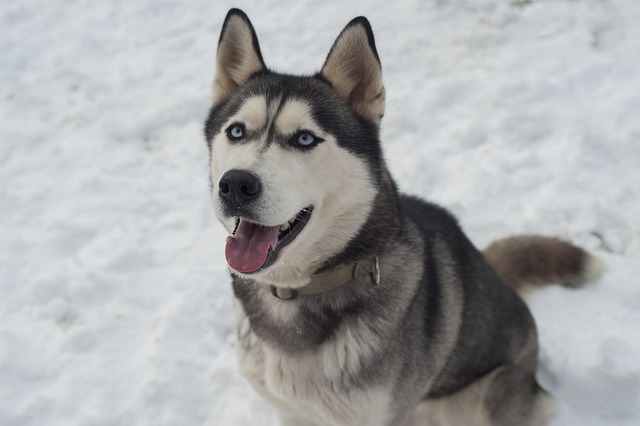
Do it hurt a dog to express glands?
Many dog owners first notice their pup scooting across the carpet or licking their rear more than usual, and that’s often when the question of gland expression pops up.
I’ll open with a relatable scenario of a new owner noticing confusing changes in their senior dog, explain what cognitive dysfunction in dogs is (and isn’t) using simple science, share how to spot signs and respond, and weave in compliance and empathy tips.
I sat on my friend Lena’s Seattle apartment couch last weekend, watching her 12-year-old Labrador, Max, wander aimlessly from the living room to the kitchen—stopping halfway, head tilted, like he’d forgotten where he was going. “He used to know exactly where his bed is. What is cognitive dysfunction in dogs, and is this what’s happening to him?” she asked, as Max finally curled up on the floor instead of his usual spot. If you’re a new U.S. dog owner noticing your senior pup acting “off,” cognitive dysfunction (often called “doggy dementia”) is a common, gentle decline in brain function—not a choice, and not something to scold. It’s how aging affects a dog’s ability to remember, learn, and stay oriented, and recognizing it early helps you support them better.
To answer “what is cognitive dysfunction in dogs,” let’s break down the basics. Lena’s vet, Dr. Carter, explained that cognitive dysfunction in dogs is a age-related condition where the brain’s cells and connections slowly weaken—like how an old phone might lag or forget saved numbers. It’s not the same as “being old and tired”: healthy senior dogs still remember routines, but dogs with CCD struggle with familiar tasks. Max’s confusion happened because his brain could no longer quickly access memories of his bed’s location or the layout of Lena’s small apartment. Unlike a behavioral problem (like chewing from boredom), CCD is physical—it’s not “bad behavior,” just a brain that’s slowing down. Scolding a dog for CCD signs (like Lena almost did when Max had an accident) violates U.S. animal welfare standards; he wasn’t being naughty—his brain couldn’t signal he needed to go outside, and our job is to understand, not punish.

Here’s how to recognize and respond to cognitive dysfunction in dogs, using what Lena learned with Max: First, spot the key signs (they’re subtle at first). Dr. Carter listed the “5 Cs” to watch for: Confusion (getting lost indoors), Changes in sleep (waking at night, napping more during the day), Communication issues (less barking or responding to their name), Compulsive behavior (pacing in circles), and Accidents (even with consistent potty training). Max had confusion, nighttime pacing, and one accident—red flags Lena caught early. Second, visit the vet (rule out other issues). Not all “senior fog” is CCD: infections, pain, or thyroid problems can look similar. Dr. Carter did a blood test (ruled out kidney issues) and observed Max’s behavior—confirmed CCD, but noted it was mild. Third, simplify their world (reduce confusion). Lena stopped rearranging her apartment furniture, kept Max’s bed, food, and water in the same spots, and added nightlights (he no longer paced in dark hallways). For apartment living, this is easy—small spaces mean fewer places to get disoriented. Fourth, keep their brain active (slow decline). She used soft puzzle feeders (easier on his teeth) and practiced simple “sit” commands—short, positive sessions that kept his brain working. Dr. Carter said mental stimulation is like “exercise for the brain” for dogs with cognitive dysfunction.
For community and compliance, these habits matter too: When walking Max, Lena sticks to their usual block (familiar sights reduce stress) and carries extra biodegradable poop bags (Seattle fines $175 for uncollected waste)—accidents are more likely with CCD, and cleaning up shows respect. She also keeps Max’s rabies vaccine up to date (mandatory nationwide, even for senior dogs) and lets neighbors know about his CCD—they now wave calmly instead of startling him with loud greetings. If other owners ask “what is cognitive dysfunction in dogs,” she says, “It’s Max’s brain getting older—but he still loves treats and short walks!” to demystify it. Dr. Carter also reminded her that CCD progresses slowly, and small adjustments (like a waterproof pad on his bed) make a big difference in his comfort.
Two weeks later, Lena texted me a photo: Max curled up on his bed (he found it on his own!) after a short walk. What is cognitive dysfunction in dogs? For Max, it’s small, confusing moments—but with patience, it’s still a life filled with love. For your pup, it’s recognizing the signs early, leaning on your vet, and adapting to their changing needs. CCD doesn’t take away their personality—it just means they need a little extra help navigating the world they once knew so well.

Many dog owners first notice their pup scooting across the carpet or licking their rear more than usual, and that’s often when the question of gland expression pops up.

I’ll start with a relatable scenario of a new owner struggling to keep their pup cool on a budget, explain how homemade cooling pads use evaporative or gel-based cooling science

I stood on my friend Lena’s Austin patio last July, watching her 2-year-old Bulldog, Tank, sprawl on his cooling pad—panting, even though the pad was supposed to keep him cool.

I’ll start with a relatable scenario of a new owner dealing with their pup’s upset stomach, explain which fruits soothe canine digestive systems

If you’ve noticed your dog scooting or licking their rear more than usual, anal gland issues might be the cause—and some breeds are more prone to this than others.

I’ll start with a relatable scenario of a new owner unsure which fruits are safe for their pup, explain what makes a fruit “good” for dogs (nutrition + low risk), share top picks and how to serve them